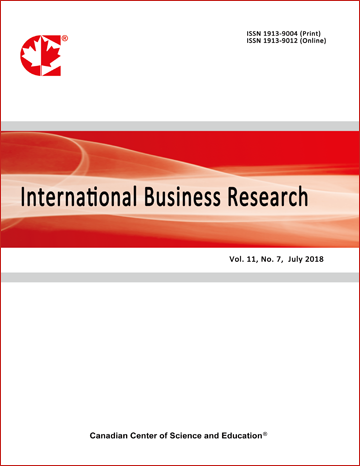Market Environment and Centralized Decision-Making and Their Impact on the Effectiveness of Organizations
- Samir AL-Abadi
Abstract
This study is an applied attempt through which the approach of Contingency Theory in measuring the market's environment, centralized decision–making and the effectiveness of the organization is used. This particular theory is considered to be one of the most important theories that relates to modern organizations as it contributes to the explanation of organization's behavior and its employees. The present study measures the above mentioned variables and sheds light on the level of using Contingency Theory in the developing countries (Jordan). The study also explains some of the cultural and social concepts and implications and their impact on the results of the research. The research mainly includes two aspects; the theoretical one, which relates to the study concepts and its related literature, and the applied aspect that includes the methodology of the research and its conclusions. The study is mainly based on two major hypotheses and three minor ones. The major hypotheses are: The first major hypothesis states "decentralization correlates to the market environment that prevails in the working organization" The second major hypothesis states" the degree of co-alignment, among decentralization indicators represented by decision–making process and market environment, is incorporeally correlated to economical and behavioral effectiveness of the organization. For the purpose of examining the research model and its hypotheses, a sample of 30 Jordanian industrial organizations from to different industrial sectors in Jordan was selected and 106 managers holding senior management positions in their organizations were included in the study. Data of the study was obtained through personal interviews and questionnaires distributed to the managers of the targeted organizations and then Alpha Coefficient was calculated for centralization, effectiveness and environment. The hypotheses of the study were examined through depending on certain indicators related to centralization, effectiveness and environment. In addition, the hypotheses were examined through depending on significant statistical indicators such as Person and Spearman correlation coefficients as they are frequently used in such studies where they help to explain positive correlations between variables and present them in a clearer manner.
- Full Text:
 PDF
PDF
- DOI:10.5539/ibr.v8n2p129
Journal Metrics
h-index (August 2025): 114
i10-index (August 2025): 1059
h5-index (August 2025): N/A
h5-median(August 2025): N/A
( The data was calculated based on Google Scholar Citations. Click Here to Learn More. )
Index
- ACNP
- ANVUR (Italian National Agency for the Evaluation of Universities and Research Institutes)
- CNKI Scholar
- CrossRef
- EconBiz
- EconPapers
- Elektronische Zeitschriftenbibliothek (EZB)
- EuroPub Database
- Excellence in Research for Australia (ERA)
- Genamics JournalSeek
- Google Scholar
- Harvard Library
- IDEAS
- Infotrieve
- Mendeley
- Open policy finder
- Qualis/CAPES
- RePEc
- ResearchGate
- ROAD
- Scilit
- Technische Informationsbibliothek (TIB)
- The Keepers Registry
- UCR Library
- UoS Library
- ZBW-German National Library of Economics
- Zeitschriften Daten Bank (ZDB)
Contact
- Kevin DuranEditorial Assistant
- ibr@ccsenet.org
